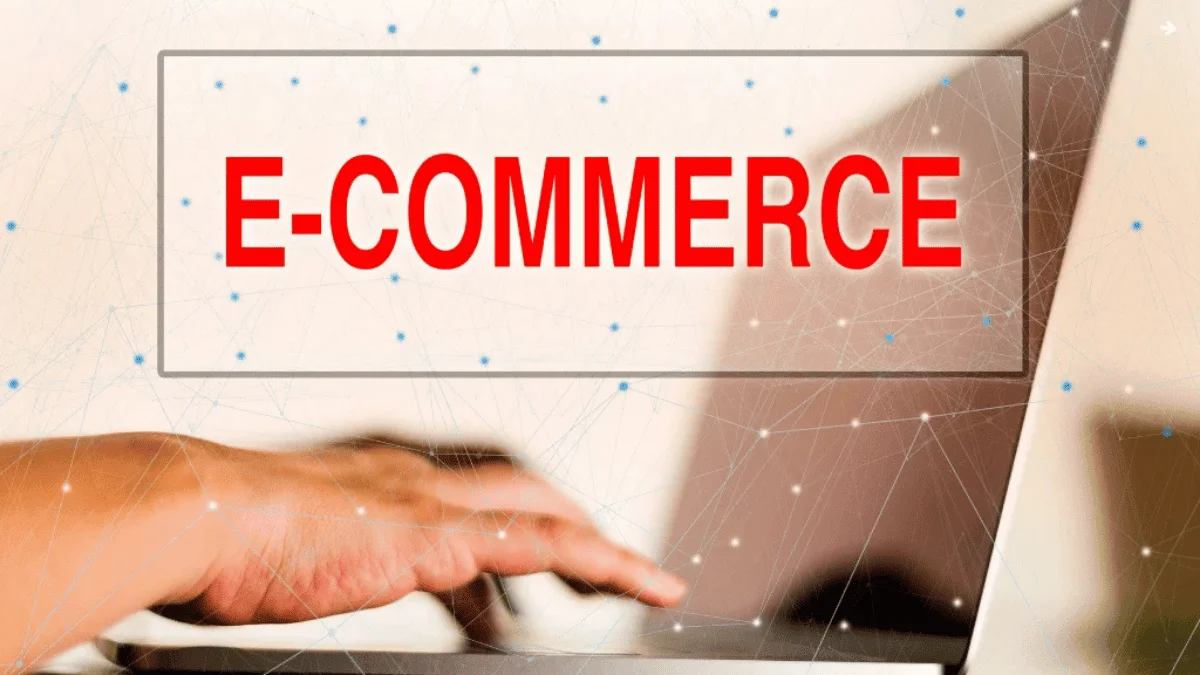Understanding the Amazon marketplace can feel like steering through a dense fog, where clarity is key to finding success. Mastering Amazon Seller Education is essential, as it equips us with the knowledge to tackle challenges and seize opportunities.
From product research to customer service, understanding these elements can make all the difference. As we explore the various facets of this journey, you’ll discover strategies that can elevate your e-commerce game to new heights.
Key Takeaways
- Leverage Amazon Seller Central resources for comprehensive learning about platform features and best practices.
- Master product research and listing optimization to enhance visibility and attract more customers.
- Engage with fellow sellers and experts for mentorship, collaboration, and sharing valuable insights.
- Stay informed about legal compliance and industry regulations to protect your business from penalties.
- Continuously analyze sales data and customer feedback to refine strategies and improve performance.
Why Amazon Seller Education is Crucial for Your Business?

While many entrepreneurs plunge into e-commerce with enthusiasm, understanding the nuances of Amazon Seller Education is crucial for long-term success. I’ve realized that utilizing resources like Amazon Seller Central can greatly enhance my knowledge base. It’s essential to engage with Amazon Seller Support when I encounter challenges, ensuring I don’t lose momentum.
High-quality proven content is abundant, helping me grasp complex concepts and strategies that foster growth. Observing successful students in the program inspires me to adapt their techniques, focusing on maximizing my opportunity score.
Through prioritizing Amazon Seller Education, I’m not just learning; I’m strategically positioning my business to thrive in an increasingly competitive marketplace. Investing time in education now paves the way for future success.
10 Key Areas Every Amazon Seller Should Learn
To succeed as an Amazon seller, I believe it’s crucial to master several key areas. Understanding product research techniques, Amazon’s algorithms, and listing optimization can greatly impact visibility and sales. Furthermore, effective pricing strategies and savvy advertising will help maximize profits in a competitive marketplace.
1. Product Research Techniques
How can I assure my product stands out in the crowded Amazon marketplace? The answer lies in mastering effective product research techniques. I leverage high-quality Amazon selling tools to identify profitable products that meet customer demands.
Through analyzing competition and understanding market trends, I can spot gaps that marketplace superheroes often miss. It’s crucial to define my target audience and focus on their preferences, making sure my offerings resonate.
I utilize keyword research to optimize listings, enhancing visibility. Monitoring sales data and customer feedback also helps refine my strategy, allowing me to adapt as needed. With a systematic approach, I can build a successful Amazon business and guarantee my products don’t just blend in, but truly shine.
2. Understanding Amazon’s Algorithms
Understanding Amazon’s algorithms is vital for anyone serious about succeeding in the marketplace. As I dove into the world of Amazon SEO, I quickly realized that mastering these algorithms can set me apart from my competitors. Experienced sellers know that product listings optimized for relevance and performance are essential.
Through analyzing how Amazon ranks products, I learned to focus on keywords, customer reviews, and sales velocity. This strategic approach not only improves visibility but also increases conversion rates. It’s about becoming a marketplace superhero, igniting my sales and maximizing my potential.
Investing time in understanding Amazon’s algorithms allows me to create effective strategies that drive success in this competitive e-commerce environment.
3. Listing Optimization Best Practices
While diving into listing optimization, I quickly discovered that a few key areas can greatly enhance an Amazon seller’s success. First, understanding your product category is essential; it helps tailor your listing to meet specific customer expectations. Next, optimizing your title, bullet points, and description with relevant keywords can improve search visibility.
I also found that high-quality images considerably boost conversion rates, making them a critical part of the listing. In addition, maintaining excellent customer service through Seller Central not only fosters positive reviews but also encourages repeat business.
These practices maximize your revenue potential, ensuring that your listings stand out in a competitive marketplace. Focusing on these best practices can lead to sustainable growth for any seller.
4. Amazon Advertising and Marketing
As I explored Amazon advertising and marketing, I realized that mastering these key areas can greatly impact a seller’s visibility and sales performance. For any Amazon seller aiming to thrive in e-commerce, understanding the various advertising options is essential. Sponsored Products, Sponsored Brands, and display ads can markedly enhance product exposure.
I’ve found that effective marketing strategies, such as utilizing social media to drive traffic to my listings, can further amplify results. In addition, analyzing performance metrics allows me to refine my campaigns, ensuring my online business remains competitive.
5. Pricing Strategies for Maximum Profit
To maximize profit on Amazon, I’ve learned that pricing strategies are essential in determining both sales volume and overall profitability. Through leveraging tools like the revenue calculator, I can assess the impact of different pricing models. Here’s a quick overview of effective strategies I’ve found beneficial:
| Pricing Strategy | Description |
|---|---|
| Competitive Pricing | Set prices based on competitors’ rates |
| Cost-Plus Pricing | Add a markup to the cost of goods sold |
| Dynamic Pricing | Adjust prices based on market demand |
| Penetration Pricing | Start low to gain market share, then increase |
Engaging with the Amazon selling community has also opened my eyes to affordable options that can enhance profit margins while remaining competitive.
6. Inventory Management Skills
Effective inventory management is essential for Amazon sellers, since it directly impacts both cash flow and customer satisfaction. To optimize my inventory skills, I focus on three key areas:
- Demand Forecasting: Understanding market trends helps me predict which products will sell, ensuring I maintain the right stock levels.
- Shipping Efficiency: Streamlining my shipping process not only reduces costs but also speeds up delivery, enhancing customer experience.
- Utilizing Resources: I leverage expert mentoring and community forums to gather insights and strategies from seasoned sellers, which sharpens my inventory management approach.
7. Customer Service Excellence
While many sellers focus solely on product listings and pricing strategies, excelling in customer service can greatly differentiate your Amazon business from the competition. A positive customer experience leads to higher satisfaction, repeat purchases, and ultimately, increased income.
To achieve this, I prioritize prompt responses to inquiries and resolve issues swiftly, showing customers that I value their time and concerns. Collecting feedback is essential; it provides insights into how my products and services are perceived.
I also encourage reviews, which not only enhance my product visibility but build trust with potential buyers. Through investing in exceptional customer service, I create a loyal customer base that not only boosts sales but also strengthens my brand’s reputation in the marketplace.
8. Building Brand Authority on Amazon
Building brand authority on Amazon is essential for long-term success, as it not only establishes trust with customers but also enhances visibility in a crowded marketplace. As I’ve navigated this competitive landscape, I’ve identified three key strategies for building brand authority:
- Quality Products: Focus on delivering premium products, especially when launching your Amazon private label items. Quality speaks volumes.
- Engaging Content: Create informative product descriptions and images that resonate with your audience—this boosts credibility.
- Customer Feedback: Actively seek and respond to feedback from students and customers. This not only improves your offerings but also fosters a loyal community.
9. Legal and Compliance Knowledge
Steering through the complex world of Amazon selling requires a solid understanding of legal and compliance knowledge, as failing to adhere to regulations can result in costly penalties or even account suspension.
I’ve learned that every business model on this marketplace is bound to specific laws, from product safety standards to intellectual property rights. Understanding compliance not only protects your business but also enhances your shipping performance, as many regulations affect how products are shipped and returned.
It’s essential to stay informed about changes in legal requirements and policies set forth by Amazon. By prioritizing legal knowledge, I can guarantee my operations stay within the guidelines, allowing me to focus on growing my business without fear of legal repercussions.
10. Analytics and Performance Tracking
Understanding analytics and performance tracking is vital for every Amazon seller aiming to optimize their business. Through leveraging the Amazon Seller Central dashboard, I can gain insights that directly impact my revenue. Here are three key areas I focus on:
- Sales Data: Analyzing trends helps me identify what’s selling well and what isn’t.
- Customer Feedback: Positive student feedback is invaluable; it guides product improvements and marketing strategies.
- Advertising Metrics: Monitoring ad performance allows me to allocate budget effectively and maximize ROI.
Utilizing these analytics tools not only sharpens my competitive edge but also guarantees I make informed decisions that drive growth. Knowing how to track performance is essential for sustained success in e-commerce.
How to Start Your Amazon Seller Education Journey?

As I begin my Amazon seller education journey, it is vital to navigate the vast resources available effectively. I’ve found that focusing on structured, educational content is fundamental, especially when exploring concepts like Amazon FBA private label. Here’s a step-by-step approach to kickstart your learning:
| Resource Type | Description |
|---|---|
| Video Training | Access to extensive tutorials |
| Student Testimonials | Insights from successful sellers |
| Guides and eBooks | In-depth written content |
| Community Forums | Networking and advice sharing |
Mastering Amazon FBA: An Educational Overview
Building on the foundational knowledge from my initial exploration of Amazon seller education, mastering Amazon FBA requires a strategic approach to grasp its complexities. To effectively navigate this model, I’ve identified three key components:
- High-quality Amazon FBA training: Seek programs that offer thorough insights into product sourcing and inventory management.
- Instructional videos: Utilize visual aids to reinforce concepts and techniques, making the learning process engaging and effective.
- Income stream optimization: Focus on strategies that enhance profitability while minimizing costs.
With many courses providing a 30-day money-back guarantee, you can invest in your education with confidence. Through concentrating on these elements, you’ll be well on your way to mastering Amazon FBA and building a sustainable income stream.
The Best Amazon Seller Courses to Take Right Now
When it comes to selecting the best Amazon seller courses, I’ve found that focusing on a few standout programs can make all the difference in your journey toward success. A top-quality Amazon FBA course is essential, especially if you want to explore Amazon wholesale strategies.
These courses often include valuable stories from students who’ve transformed their businesses, providing real-world insights that can inspire and motivate you. I recommend looking for programs that emphasize passive income strategies, as they can help you build a sustainable income stream.
Through choosing the right course, you can equip yourself with the knowledge needed to navigate the complexities of Amazon selling and ultimately thrive in e-commerce.
Understanding Amazon Seller Metrics: What You Need to Know?
Understanding Amazon seller metrics is essential for anyone looking to succeed on the platform, especially since these metrics directly reflect your performance and can influence your sales. I’ve learned that focusing on key metrics can greatly enhance my strategy. Here are three vital metrics to monitor:
- Order Defect Rate (ODR): This measures the percentage of orders with issues, affecting your service level.
- Fulfillment Performance: This reflects shipping times and service quality, important for maintaining customer satisfaction.
- Customer Feedback Score: Experts recommend regularly reviewing this to gauge your experience and content quality.
How to Improve Your Amazon Seller Performance?
Improving your Amazon seller performance hinges on a strategic approach that addresses both operational efficiency and customer engagement. One vital step is to regularly analyze your pricing strategy. Ensuring your prices are competitive can greatly enhance your visibility in the Amazon store.
I’ve found that actively seeking customer experiences can help identify areas for improvement. When you receive negative feedback, treat it as an opportunity to refine your processes. Responding promptly and constructively shows potential buyers you care about their satisfaction.
Optimizing your product listings with clear descriptions and high-quality images can boost conversion rates. Through focusing on these elements, you’ll enhance your seller performance and foster long-term success in the competitive e-commerce landscape.
How to Leverage Amazon Seller Education Resources for Success?
Although many sellers may overlook them, leveraging Amazon’s seller education resources can greatly enhance your chances of success. Through strategically utilizing these resources, I’ve discovered valuable opportunities to grow my business. Here’s how I approach it:
- Courses and Webinars: I engage in Amazon’s free courses and webinars that cover essential topics, keeping me updated on industry trends.
- Seller Forums: I participate in seller forums, where I can exchange insights and strategies with other successful sellers, learning from their experiences.
- Resource Library: I frequently check Amazon’s resource library for guides and best practices that help refine my selling techniques.
Essential Tools and Resources for Amazon Seller Education
Utilizing Amazon’s seller education resources has opened my eyes to a range of tools that can considerably enhance my selling strategy. These essential tools are designed to streamline processes and boost my marketplace success. Here’s a quick overview of some invaluable resources I’ve found:
| Tool | Purpose | Benefit |
|---|---|---|
| Seller University | Extensive training | Knowledge on best practices |
| Amazon Seller App | Inventory management | Real-time sales tracking |
| A/B Testing Tools | Optimize listings | Improved conversion rates |
| Market Research Tools | Analyzing competition | Informed decision making |
Why Continuing Education is Key for Amazon Sellers?

As I navigate the ever-evolving landscape of Amazon selling, I’ve realized that continuous education is crucial for maintaining a competitive edge. It’s not just about knowing the basics; it’s about becoming a real expert in the field. Here are three reasons why continuing education matters for Amazon sellers:
- Stay Informed: Industry experts regularly share insights that can help us adapt to market changes.
- Enhance Skills: Learning new strategies allows us to improve our listings and marketing approaches.
- Network Opportunities: Engaging with fellow sellers and experts opens doors for collaboration and mentorship.
Success in e-commerce hinges on our willingness to learn and grow. Embracing continuous education guarantees we’re not left behind in this dynamic marketplace.
How to Stay Updated with Amazon’s Ever-Changing Policies?
Staying updated with Amazon’s ever-changing policies can feel overwhelming, yet it’s vital for every seller who wants to thrive on the platform. To navigate this landscape effectively, I rely on several key resources.
First, I regularly visit Amazon Seller Central for the latest policy updates and announcements. Sign up for Amazon’s newsletters and follow their official social media channels to receive real-time information.
Engaging with the seller community is invaluable; forums and groups often share insights and experiences that can shed light on new policies. I invest time in Amazon seller education courses that cover updates and best practices. Leveraging these resources helps me stay informed and guarantees compliance with Amazon’s evolving standards.
How Mohit Ecommerce Can Help You Excel in Amazon Seller Education?

When it comes to excelling in Amazon seller education, partnering with Mohit Ecommerce can greatly enhance your understanding and strategy. We offer a unique approach that helps you build a business from scratch while ensuring a solid income. Here’s how Mohit Ecommerce stands out:
- Comprehensive Training: We provide in-depth courses that cover essential aspects of Amazon seller education.
- Practical Tools: We offer tools that streamline your selling process, maximizing efficiency.
- Expert Guidance: Our experienced team guides you through the intricacies of e-commerce, helping you avoid common pitfalls.
How to Learn Amazon Seller Skills in the Fastest Way Possible?
To quickly grasp Amazon seller skills, it’s essential to focus on a strategic approach that prioritizes practical experience over theoretical knowledge. I recommend diving into tutorial videos that offer step-by-step walkthroughs, allowing you to visualize the selling process.
Joining Facebook groups can also provide real-time insights from experienced sellers, fostering a community where you can ask questions and share challenges.
When sourcing wholesale products, look for reliable suppliers offering a 14-day money-back guarantee, which minimizes risk while you learn.
Engaging with these resources accelerates your understanding and helps you navigate the complexities of Amazon selling effectively. Through combining these strategies, you can rapidly develop the skills needed to succeed in e-commerce.
Common Mistakes New Amazon Sellers Make (and How Education Helps)
While diving into the world of Amazon selling can be exciting, many new sellers often stumble into common pitfalls that can hinder their success. Through education, I learned to avoid these mistakes, enhancing my selling experience. Here are three common mistakes I’ve seen people make:
- Ignoring Product Research: Many jump in without understanding their market, leading to poor sales.
- Overlooking Listing Optimization: Neglecting to optimize titles and descriptions can result in missed visibility.
- Underestimating Costs: Some fail to account for Amazon fees and other expenses, impacting profitability.
Investing in education, whether through courses or forums, is an affordable alternative to trial and error. It provides the necessary tools to navigate these challenges and ultimately succeed in e-commerce.
The Role of Mentorship in Amazon Seller Education
How can mentorship transform your journey as an Amazon seller? A mentor provides invaluable guidance, leveraging their experience to help you navigate the complexities of Amazon seller education.
Through joining a Facebook community, you can connect with seasoned sellers who share their stories, offering insights that textbooks often miss.
These narratives can illuminate the path to success and expose potential pitfalls. Utilizing your advisor time effectively allows you to ask tailored questions, ensuring you’re focusing on the right strategies.
Mentorship isn’t just about advice; it’s about creating a support system that encourages growth and learning. With the right mentor, you’ll gain confidence and clarity, making your e-commerce journey more strategic and less intimidating. Embrace mentorship for lasting success.









